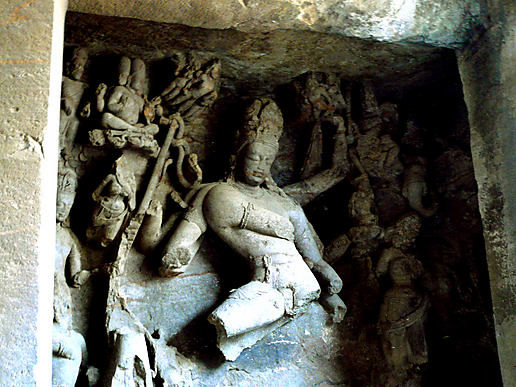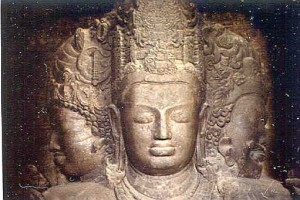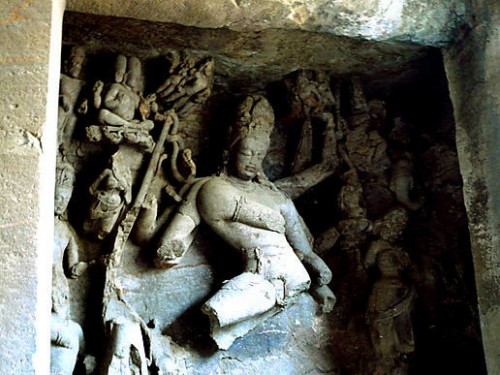TBI Heritage: A Glimpse Into The Rock-Cut Art of Elephanta Caves
This is not a story in the true tradition of The Better India. This is not a tale of inspiration or a reason to celebrate human courage or spirit of

This is not a story in the true tradition of The Better India. This is not a tale of inspiration or a reason to celebrate human courage or spirit of innovation. This is a call to action. We will be doing this from time to time. So that we do not become too complacent. So that we do not forget that WE also need to do something to shake up the current state of affairs, to improve things around us, to BE the change-makers instead of only reading about them. There are issues like these which need our urgent attention, before they are lost to eternity, and WE NEED TO ACT TODAY! We would love to know your thoughts on how we could, as a community, take responsibility for our monuments and heritage .
UNESCO World Heritage Site, Elephanta Caves, dating back to 4-9 AD, lies 7 km from the shore on the mainland of Elephanta Island while the Island, originally named, Gharapuri/ city of caves, lies about 11 km north-east of Apollo Bunder in Mumbai. Carved out of solid rock, the Elephanta caves feature some of the most impressive statues of Lord Shiva, in his various forms and avatars.

Except during the monsoons, the ferries leave from the Gateway of India around 9am in the morning in every half an hour duration while the last ferry from the caves leaves around 5.30pm in the evening, on all days except Mondays. Thousands of tourists, who come to Mumbai, make it a point to explore this historical site. The entire sea journey to the caves is breathtaking, especially the view of the huge ships standing tall in the midst of the huge Arabian Sea and the scenic view that the vast sea offers to the tourists.
Going backwards in time
In 1534, Elephanta along with the islands that were to constitute Bombay went under Portuguese control. By then sections of the caves were already in ruin, damaged by weather and nature’s forces. It is reported that target practice by soldiers may have also damaged a few sculptures. Later, the Marathas occupied the island in the 17th century. In 1774, the English took control of the island. Unchecked destruction within the cave site continued under British rule and it was not until 1909 that the main cave was declared a protected site under the Ancient Monuments Preservation Act.

The sculptures in these caves are considered representative of ancient art forms – especially that of the Chalukyan empire and the Gupta kingdom. The three temples stretch out from Stupa Hill to Canon Hill, but it is the temple in the centre – the Main Temple – that is grand and exquisite. It’s dedicated to the Hindu god Shiva (the Destroyer in the Hindu Trinity), and showcases Shiva in all his different forms. Massive square-sided pillars support a ceiling that is believed to have originally been painted. Right opposite the entrance, dominating the wall, is a huge sculpture that depicts Sadashiva, the three faces or embodiments of Shiva. There are other depictions of Shiva too – as Nataraj, performing the cosmic dance of destruction; as Yogeshwar, the lord of yoga; as Ardhanareeshwara – half man and half woman and – in his most romantic form – as Kalyanasundara, the loving and gentle bridegroom in his wedding with Parvati. All of the sculptures, including those of the eight dwarapalas (guards of the gate) surrounding the sanctum sanctorum with its Lingam, are intricate and beautifully decorated.
The rich ecosystem
In addition to being a seat of culture, Elephanta is an ecological treasure, home to myriad species of fauna. Kingfishers, Pond Herons, Plovers, Magpies, Kites, Bulbuls, Drongos and Minivets, Paradise Flycatchers, Rhesus, Bonnet and Macaque species of monkey as well as numerous butterfly species can be easily found on the island and its forests. However, today the island has become more of a fragile zone getting highly impacted by the industrial developments from Jawaharlal Nehru Port Trust, Butcher Island, petrochemical installations, the nuclear plant at Trombay and the Bhabha Atomic Research Centre. Besides, plastic bags flutter outside the caves and the tetrapacks can be seen floating around the water cistern damaging much of the environment of the island and posing a danger to the survival of the rich and rare species.
The state of the caves and efforts underway
To the right of the main cave, an asbestos sheet is fitted in an attempt to ensure the water from the roof of the caves flows into a natural well below. The ASI installs the sheet every monsoon. The caves are cleaned using chemicals. However, the defaced head of a lion that stands guard at the lingam shrine in the east court of the main cave shows that the caves lack adequate protection and upkeep. The question then remains as to what happens to the funds that are given to protect the caves. The main planning goes around utilising the grants from the government to install dustbins, create garbage pits, beautify the jetty, build toilets and put up signage across the island. Graffiti is widespread and water seepage is an issue the Archaeological Survey of India (ASI) is struggling to cope with. Further, ad-hoc construction has led to mismanagement on the island. It is quite evident that the area requires stricter regulations and proper utilization of monetary resources.
Nearly 90 per cent of locals thrive on Elephanta tourism. The closure of a heritage site such as this is not only unimaginable and beyond reason but would also pose a big economic trouble to the locals of the island and to the image of India’s tourism in general. The caves are too precious and sacred to be lost.

As protectors of the world’s heritage, archaeologists need government support to protect these historical sites which are in a debilitated state. They can’t fight on their own to save the monuments but we as citizens together can help them in protecting our precious sites so that the future generations are able to get a glimpse of our rich heritage.
The question then is will generating media awareness around the state of our crumbling heritage spots actually improve the lot of the ASI, and help in preserving a few more collapsing monuments? We certainly hope so, and this is our effort in that direction.
This story made me
-
97
-
121
-
89
-
167













